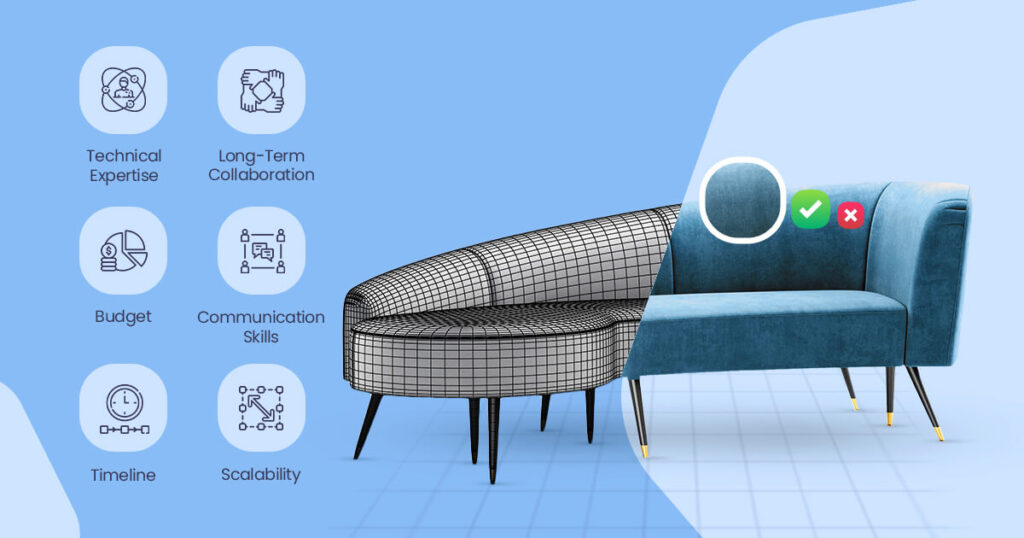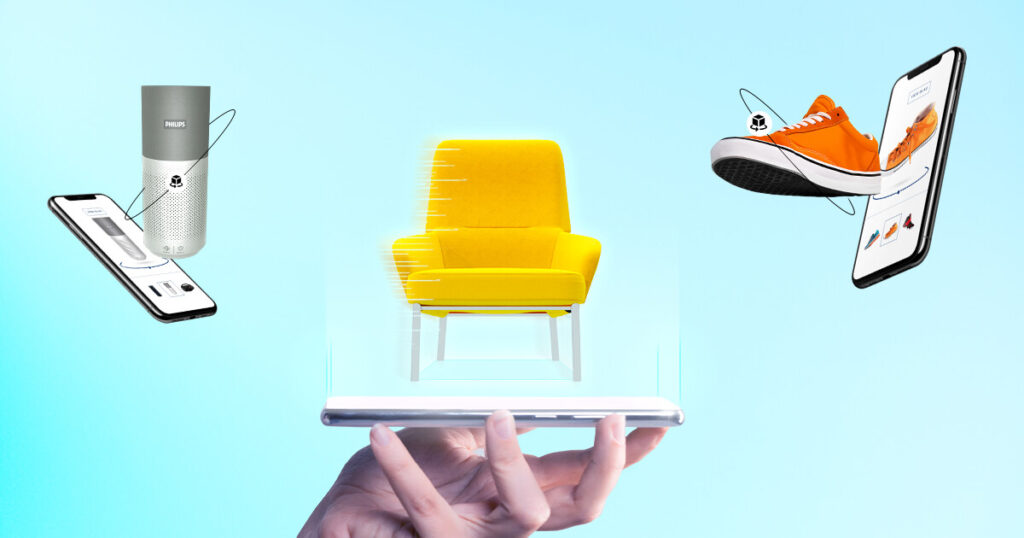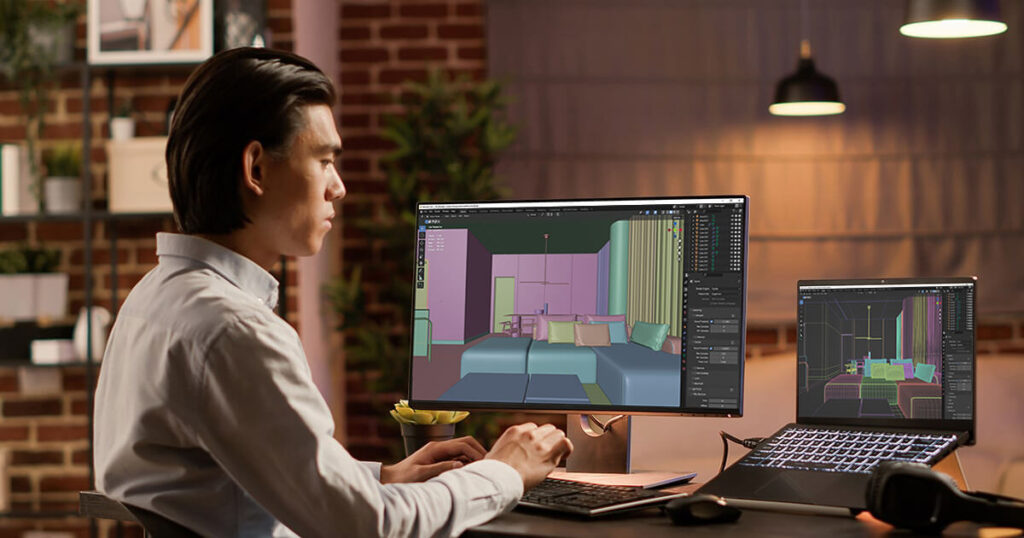In the world of today’s fast-moving digital marketing, there is an emergence of augmented reality furniture as a transformative force. This makes augmented reality such an effective tool for businesses that want to connect with consumers as it enhances the physical world through the digital elements on top of it. It is especially relevant to the furniture industry, where this technology allows customers to see the products in their own setting prior to actually buying them.
By utilizing augmented reality furniture, users can position virtual furniture in their homes using a smartphone or tablet. This advanced application of AR has revolutionized interacting with products for consumers, thus leading to an artistically immersive and interactive shopping experience. Accordingly, customers are able to get a peek at how a certain item may appear and fit in their room, thereby instilling trust in the buyers and bringing down the rate at which goods are returned.
This blog post aims to explore the innovative possibilities of augmented reality furniture in marketing tactics. By examining its diverse usages, we’ll show how furniture companies can use this tool for better customer involvement, a simplified buying process, and hence increased profits.
The Evolution of Augmented Reality Furniture in Marketing
Historical Context of AR Technology in Marketing
The retail industry has completely changed because of augmented reality furniture, with clients having more interactive and experiential shopping. But before that, AR technology began its journey in marketing many years ago. The early days were mainly in gaming and entertainment till the time when brands started seeing its possible use in engaging customers. By the mid-2010s, a great tool for marketing was born from AR, especially for sectors such as fashion, beauty, and furniture where visualization plays an important role.
Key Advancements that Have Facilitated the Integration of AR in Furniture Marketing
The involvement of key technological improvements in the incorporation of virtual furniture merchandise is paramount. Exceptional mobile phone potentials, complex three-dimensional modeling programs, and user-friendly cloud-based rendering have made it easy for brands to offer customers like-looking AR experiences (Jones, 2019). This allows the clients to set up imaginary furniture pieces within their rooms, thus being able to notice how exactly the item will appear before purchasing it.
Case Studies of Successful AR Marketing Campaigns in the Furniture Industry
IKEA’s AR app and Way fair’s interactive features are examples of successful campaigns that have set a benchmark for others. Through these initiatives, consumers can be engaged, sales increased, and rates of return reduced through accurate representations of products directly placed in their homes via AR technology.
Benefits of Augmented Reality Furniture in Marketing
Enhanced Customer Engagement through Interactive Experiences
Customers can use augmented reality (AR) furniture to engage with products more intensely compared to conventional shopping methods. Rather than just looking at catalogues. Users can place virtual furniture in their house, thus creating engaging and entertaining shopping moments that last longer. By being more interactive, this technique encourages extensive customer relationships, resulting in enhanced sales and interest towards specific brand items.
Improved Decision-Making for Consumers by Visualizing Products in Their Own Spaces
When it comes to practical uses of augmented reality furniture, informing buyers is one of its main strengths. This is because this technology enables potential buyers to see virtual images portraying how that particular brand would appear inside their houses as opposed to guesswork or knowledge based on books or experience alone. As a result, less confusion prevails regarding what exactly needs to go where, resulting in diminished levels of return rates as well as happier clients in general.
Increased Brand Loyalty and Differentiation in a Competitive Market
Marketing firms use advanced technical tools such as augmented reality to bring in more customers who are looking for something different in their furniture. It has sparked brand loyalty, leading to more customers coming back and purchasing from the same company due to better shopping experiences.
Challenges and Considerations for Augmented Reality Furniture
Technical Limitations and the Need for User-Friendly Applications
Despite the fact that augmented reality furniture has a lot of advantages, some technical challenges still need to be addressed. Some AR experiences can frustrate users due to inaccurate scaling, low-quality 3D models, or lagging performance. Moreover, not every consumer owns an electronic device that is capable of supporting high-quality augmented reality furniture applications. In order to promote mass acceptance, companies must provide easy-to-use and simple applications that are adaptable to different gadgets.
Consumer Privacy Concerns and Data Security Issues
Just like any other digital platform, privacy and security of customer information are paramount. For instance, AR furniture applications might fetch information about user’s likings, actions, or even houses, leading to different privacy issues. To build trust with their clients, brand names need to put in place rigorous data protection programs, respect privacy acts, and inform customers on the method used in gathering as well as applying information on consumers.
Strategies for Overcoming Barriers to Widespread Adoption of AR Furniture
Ensuring easy use and optimizing AR experiences for a wider range of devices can aid in overcoming these challenges. Working with tech developers for reliable and accurate AR models will improve the overall experience. Furthermore, consumer concerns can be addressed by having transparent privacy policies and data protection measures that will raise confidence in AR furniture solutions, thus ensuring wider acceptance.
Conclusion
In the industry of furniture, augmented reality has made profound changes in how consumers relate to various brands. This is achieved through interactive and immersive experiences that help customers make better decisions, increase engagement levels, and differentiate the furniture brand from others in this highly competitive market. More so, AR provides product visualizations that are so realistic that they enable the buyer to avoid unnecessary returns and instead improve on their satisfaction.
The furniture industry’s use of AR technology will keep evolving as the technology itself progresses. Thanks to better mobile devices, 5G internet connection, and upgraded 3D designs, augmented reality furniture will soon be within reach of almost everyone, making it more dynamic. In the future, AR might be paired with AI for personalized suggestions so that buying things becomes effortless.
Augmented reality will have a big impact on furniture marketing in the future. This is because this technology enables brands to create interactive and personalized experiences for their consumers. Thus, they can enhance customer experience and hence maintain customers for longer periods of time. Therefore, such furniture companies remain competitive in a rapidly changing digital landscape through innovations like augmented reality furniture.
FAQ:
What are the newest developments and trends in AR furniture technology?
AR furniture technology trends include virtual try-ons, real-time room visualization, and AI-powered design suggestions to enhance shopping experiences. Innovative integration with e-commerce platforms and seamless smartphone AR experiences are changing how customers engage with furniture brands.
In what ways does AR furniture affect consumers’ decision-making process?
The customers are empowered by AR furniture as it allows them to visualize it in their own space, which reduces uncertainty and increases confidence in buying it. It also enhances its exportability, facilitates the consideration of fit and style, and finally makes the decision-making easier for buyers.
What effect does AR furniture have on consumer pleasure and intention to buy?
AR furniture enhances consumer satisfaction through an interactive and immersive shopping experience. The use of virtual placement and customization leads to increased satisfaction that informs consumer purchases with greater confidence and intention because they feel surer about their options before making a purchase.
What possible privacy repercussions may employing AR furniture in marketing have?
AR furniture marketing has certain privacy implications due to the collection of spatial data and user behavior information via applications. If misused or stolen, this information may threaten consumer privacy, thus requiring strict procedures for data protection as well as transparency.
How can companies make sure AR furniture technology is used morally?
For the purpose of making the best ethical use of AR furniture technology and ensuring its integrity, businesses should set up open data regulations, get clear consent from the users, gather only needed information, keep it in safe places, and check regularly if they are following privacy principles in order to maintain trust.






